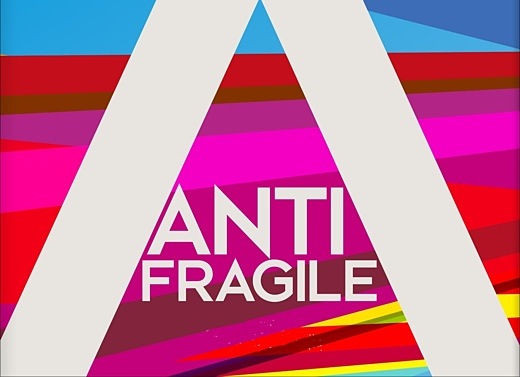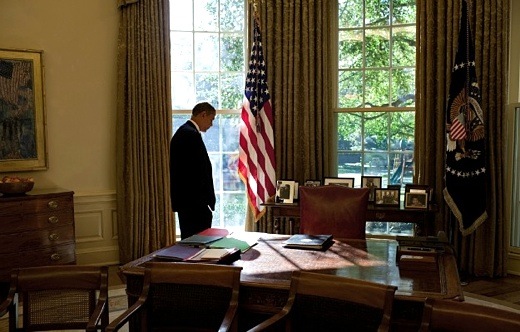SUBHEAD: The GMO industry has managed to hire the worst public relations strategists in human history.
By Kurt Cobb on 10 July 2016 for Resource Insights -
(http://resourceinsights.blogspot.com/2016/07/gmo-industry-dumbest-guys-in-room.html)

Image above: These are two labels that guarantee that the food in the package contains no GMO ingredients. From (http://organicconnectmag.com/project/a-tale-of-two-labels-organic-and-non-gmo/).
[IB Publisher's note: The Vermont labeling law was not strong enough. To merely indicate that the ingredients of a food package "contains genetically engineered ingredients" does not tell us nearly enough. For example; if the only GMO ingredient in the product is only a few percentage of the total product that is quite different from it being a major element like high-fructose-corn-syrup (HFCS) in soft drinks. The way food ingredients are labeled is in descending order of percentage. Frozen non GMO corn with added dash of HFCS as a sweetener and some salt might be 95% GMO free. Where as if the corn was a GMO product the package would be 95% GMO. This should be reflected in the ingredients label listing. For example: as "INGREDIENTS: Corn, GMO HFCS, salt" or "INGREDIENTS: GMO corn, GMO HFCS, salt". This is not being done because of the "burden" on those providing the printed packaging to various locations with differing requirements. All the more reason for a comprehensive, informative and easy to read labeling regimen coming from the federal government. Until then we will have to rely on "USDA Organic" or "Non GMO Product" labels on packaging.]

Image above: Possible senate (and Democrat) approved. Isn't this informative to the buyer? QR scanner code mark which would "inform" consumer, of among other things, if there was GMO content. From (http://www.resilience.org/stories/2016-07-10/gmo-industry-the-dumbest-guys-in-the-room).
I am now convinced the GMO industry has managed to hire the worst public relations strategists in human history. By supporting a deeply flawed GMO labeling bill in the U.S. Congress--some would say intentionally deeply flawed--the industry is about to open a Pandora's Box of PR nightmares for years to come.
First, a little background. GMO, of course, means genetically modified organism which more properly refers to genetically engineered crops and animals. GMO industry leader Monsanto and its competitors such as Bayer, Dupont, Dow Chemical and Sygenta have all been fighting a fierce battle in the United States against labeling foodstuffs derived from genetically engineered crops.
After defeating statewide labeling referendums in California, Oregon and Washington, they failed to stop the implementation of Vermont's GMO labeling law which went into effect July 1st.
In desperation the companies have been trying to get the U.S. Congress to pass a nationwide labeling law--one that is considerably less stringent and also riddled with loopholes--that would pre-empt Vermont's law. Just last week the Senate approved its version of the labeling law. If the House and Senate can work out their differences, we may see such a law signed by President Obama before too long.
The industry's main complaint has been that labeling GMOs would unfairly stigmatize them in the minds of consumers. Some 64 countries already require such labeling. What concerns the industry is that increased consumer awareness could create a movement that would lead to a ban on the cultivation of GMO crops, a ban already implemented by 19 countries in Europe.
Opponents of the GMO labeling law currently moving through the U.S. Congress believe it is so poorly drafted that almost no commonly consumed genetically modified foods will actually be covered.
In addition, food derived from newer gene-editing techniques as opposed to transgene processes--the ones that transfer genes from one species to another--may be excluded as well. The fact that agricultural trade groups are praising the labeling bill--after fighting labeling for years--tells you something about how effective they believe the law will be at informing consumers, namely, not very.
The Senate bill allows food manufacturers to use a symbol, a statement or a so-called QR code that shoppers would have to scan using a cellphone to obtain information on genetically engineered ingredients. Small companies could simply list a phone number or website address.
If you were selling GMO-derived foods, which would you use? Probably the options that provide the least information and which make it most difficult for consumers to access that information. This assumes that anything in your product actually turns out to be covered by the law which looks like it will exclude great swaths of foodstuffs containing genetically engineered ingredients.
Given what we know now, the final bill is likely to be vague and riddled with exceptions and confusing directives. The GMO-friendly U.S. Department of Agriculture will then be tasked with writing the actual labeling regulations.
We are thus assured of months and perhaps years of wrangling over the labeling rules, every step of which will be given wide and probably negative coverage by the anti-GMO activist community. The pending federal labeling law is more likely to assist opponents in sowing mistrust of major food companies than alleviate it.
When the rules go into effect, if they are every bit as lax as the law seems to promise, the activists will make a sport out of spotting and telling on companies that are cheating or that are cleverly thwarting the purposes of the law.
The anti-GMO groups will likely put out lists of the worst labeling violators and lists of their products containing GMOs. And, of course, there will be lists based on those enigmatic QR codes. Perhaps those codes will become the equivalent of the skull and crossbones feared by one GMO executive.
The whole shopping experience will be treated like an reverse Easter egg hunt. Can you spot the GMO foods? Can you identify the alleged cheaters on the grocery store shelves and punish them by refusing to buy their products?
Perhaps some enterprising activist, one not afraid of incarceration, will surreptitiously slap GMO cheater labels on various products on the store shelves that are not labeled properly. Any subsequent arrest will then lead to more coverage as some in the public cheer the civil disobedience while others simply shrug their shoulders.
Acquiescence to the Vermont law or acceptance of a federal law with Vermont's straightforward labeling rules would have saved the GMO industry from what will almost surely be a years-long PR debacle if the labeling law before Congress passes.
There will doubtless be many more creative ways than I've listed for GMO opponents to tweak the industry and keep the issue of honest labeling alive and before the public. If only the industry had accepted Vermont's labeling law as the de facto standard for the country, the industry would have in one stroke taken the issue away from its opponents!
But the industry's business and public relations strategists are the same ones who made a colossal marketing error--while believing they had achieved a regulatory coup--when they steamrolled the U.S. Food and Drug Administration (FDA) into ruling that GMOs are "substantially equivalent" to their non-GMO counterparts and therefore require no testing.
The FDA did this despite their own scientists' concerns that these novel life forms might have unanticipated effects on the environment and on humans who consume them. Some of those scientists thought extensive testing similar to what a new drug must go through was advisable to rule out such risks.
The reason this strategy has turned out to be a colossal marketing error is that as the attacks on GMOs have mounted during the intervening couple of decades, the industry finds itself unable to pivot and point to any advantages that GMO foods have for consumers over non-GMO foods. This is because the industry has been saying for more than 20 years that GMOs have no advantages for consumers.
After all, GMO foods are said to be "substantially equivalent." That means that the industry cannot give consumers any reasons to prefer GMO foods over their non-GMO counterparts. Any claims of superiority over conventional foods made now will ring hollow and bring down an avalanche of public derision from GMO opponents.
(The industry may cite supposed advantages for farmers and for the environment. But those advantages are sharply and publicly disputed by anti-GMO activists and have nothing to do with taste, nutrition or appearance which are what matters to consumers. While the GMO industry tells us that GMO crops with enhanced nutrition are coming, I can find only one that has been brought to market under a cloud of concerns. So far genetic engineering has focused on creating plants the produce insecticides internally--not a pleasant thought for those eating them--and which are immune to herbicides made by, you guessed it, the companies producing the GMO seeds.)

Image above: GMO experimental corn field with rows of "Supreme EX Brand Seed". From (http://www.resilience.org/stories/2016-07-10/gmo-industry-the-dumbest-guys-in-the-room).
These same industry strategists have directed a campaign of fear aimed at farmers to prevent supposed intellectual property theft through the use of saved GMO seeds. Even those into whose fields GMO seeds have been swept by wind have been sued. Since farmers growing in areas where other farmers grow genetically engineered crops may be subject to windblown "thefts," they have an incentive to grow GMO crops on their land and pay the royalties to avoid being sued for such "theft." Essentially, it's, "Buy from us or we'll sue you--and we're a lot richer than you are."
Aggressive tactics including smear campaigns have also been used against critics who question the safety and social utility of GMOs and associated farm chemicals. (Click here, here and here.) Mostly, those campaigns have backfired by creating extensive media coverage of the smear campaigns themselves.
These aggressive tactics have made the company most associated with the GMO industry, Monsanto, one of the most hated corporations in America.
All of this would make for an enviable record for anti-GMO activists, and yet it comes from business and public relations strategists in the industry itself. In most industries, a record like this would lead to a rash of sackings.
Instead, the bunglers have managed to bungle into yet another long-term public relations disaster of their own making. They seem not to have learned anything from their repeated failures.
All this should be pleasing to GMO opponents who must be thinking these continuing debacles couldn't be happening to nicer people.
P.S. I borrow my slightly altered headline for this piece from a book and film entitled "The Smartest Guys in the Room" about the collapse of Enron, the energy trading firm. The phrase refers to key traders in the company who believed they were, in fact, always the smartest guys in the room, the same ones who eventually brought the company down.
• Kurt Cobb is an author, speaker, and columnist focusing on energy and the environment. He is a regular contributor to the Energy Voices section of The Christian Science Monitor and author of the peak-oil-themed novel Prelude. In addition, he has written columns for the Paris-based science news site Scitizen, and his work has been featured on Energy Bulletin (now Resilience.org), The Oil Drum, OilPrice.com, Econ Matters, Peak Oil Review, 321energy, Common Dreams, Le Monde Diplomatique and many other sites. He maintains a blog called Resource Insights and can be contacted at kurtcobb2001@yahoo.com.
.
By Kurt Cobb on 10 July 2016 for Resource Insights -
(http://resourceinsights.blogspot.com/2016/07/gmo-industry-dumbest-guys-in-room.html)

Image above: These are two labels that guarantee that the food in the package contains no GMO ingredients. From (http://organicconnectmag.com/project/a-tale-of-two-labels-organic-and-non-gmo/).
[IB Publisher's note: The Vermont labeling law was not strong enough. To merely indicate that the ingredients of a food package "contains genetically engineered ingredients" does not tell us nearly enough. For example; if the only GMO ingredient in the product is only a few percentage of the total product that is quite different from it being a major element like high-fructose-corn-syrup (HFCS) in soft drinks. The way food ingredients are labeled is in descending order of percentage. Frozen non GMO corn with added dash of HFCS as a sweetener and some salt might be 95% GMO free. Where as if the corn was a GMO product the package would be 95% GMO. This should be reflected in the ingredients label listing. For example: as "INGREDIENTS: Corn, GMO HFCS, salt" or "INGREDIENTS: GMO corn, GMO HFCS, salt". This is not being done because of the "burden" on those providing the printed packaging to various locations with differing requirements. All the more reason for a comprehensive, informative and easy to read labeling regimen coming from the federal government. Until then we will have to rely on "USDA Organic" or "Non GMO Product" labels on packaging.]

Image above: Possible senate (and Democrat) approved. Isn't this informative to the buyer? QR scanner code mark which would "inform" consumer, of among other things, if there was GMO content. From (http://www.resilience.org/stories/2016-07-10/gmo-industry-the-dumbest-guys-in-the-room).
I am now convinced the GMO industry has managed to hire the worst public relations strategists in human history. By supporting a deeply flawed GMO labeling bill in the U.S. Congress--some would say intentionally deeply flawed--the industry is about to open a Pandora's Box of PR nightmares for years to come.
First, a little background. GMO, of course, means genetically modified organism which more properly refers to genetically engineered crops and animals. GMO industry leader Monsanto and its competitors such as Bayer, Dupont, Dow Chemical and Sygenta have all been fighting a fierce battle in the United States against labeling foodstuffs derived from genetically engineered crops.
After defeating statewide labeling referendums in California, Oregon and Washington, they failed to stop the implementation of Vermont's GMO labeling law which went into effect July 1st.
In desperation the companies have been trying to get the U.S. Congress to pass a nationwide labeling law--one that is considerably less stringent and also riddled with loopholes--that would pre-empt Vermont's law. Just last week the Senate approved its version of the labeling law. If the House and Senate can work out their differences, we may see such a law signed by President Obama before too long.
The industry's main complaint has been that labeling GMOs would unfairly stigmatize them in the minds of consumers. Some 64 countries already require such labeling. What concerns the industry is that increased consumer awareness could create a movement that would lead to a ban on the cultivation of GMO crops, a ban already implemented by 19 countries in Europe.
Opponents of the GMO labeling law currently moving through the U.S. Congress believe it is so poorly drafted that almost no commonly consumed genetically modified foods will actually be covered.
In addition, food derived from newer gene-editing techniques as opposed to transgene processes--the ones that transfer genes from one species to another--may be excluded as well. The fact that agricultural trade groups are praising the labeling bill--after fighting labeling for years--tells you something about how effective they believe the law will be at informing consumers, namely, not very.
The Senate bill allows food manufacturers to use a symbol, a statement or a so-called QR code that shoppers would have to scan using a cellphone to obtain information on genetically engineered ingredients. Small companies could simply list a phone number or website address.
If you were selling GMO-derived foods, which would you use? Probably the options that provide the least information and which make it most difficult for consumers to access that information. This assumes that anything in your product actually turns out to be covered by the law which looks like it will exclude great swaths of foodstuffs containing genetically engineered ingredients.
Given what we know now, the final bill is likely to be vague and riddled with exceptions and confusing directives. The GMO-friendly U.S. Department of Agriculture will then be tasked with writing the actual labeling regulations.
We are thus assured of months and perhaps years of wrangling over the labeling rules, every step of which will be given wide and probably negative coverage by the anti-GMO activist community. The pending federal labeling law is more likely to assist opponents in sowing mistrust of major food companies than alleviate it.
When the rules go into effect, if they are every bit as lax as the law seems to promise, the activists will make a sport out of spotting and telling on companies that are cheating or that are cleverly thwarting the purposes of the law.
The anti-GMO groups will likely put out lists of the worst labeling violators and lists of their products containing GMOs. And, of course, there will be lists based on those enigmatic QR codes. Perhaps those codes will become the equivalent of the skull and crossbones feared by one GMO executive.
The whole shopping experience will be treated like an reverse Easter egg hunt. Can you spot the GMO foods? Can you identify the alleged cheaters on the grocery store shelves and punish them by refusing to buy their products?
Perhaps some enterprising activist, one not afraid of incarceration, will surreptitiously slap GMO cheater labels on various products on the store shelves that are not labeled properly. Any subsequent arrest will then lead to more coverage as some in the public cheer the civil disobedience while others simply shrug their shoulders.
Acquiescence to the Vermont law or acceptance of a federal law with Vermont's straightforward labeling rules would have saved the GMO industry from what will almost surely be a years-long PR debacle if the labeling law before Congress passes.
There will doubtless be many more creative ways than I've listed for GMO opponents to tweak the industry and keep the issue of honest labeling alive and before the public. If only the industry had accepted Vermont's labeling law as the de facto standard for the country, the industry would have in one stroke taken the issue away from its opponents!
But the industry's business and public relations strategists are the same ones who made a colossal marketing error--while believing they had achieved a regulatory coup--when they steamrolled the U.S. Food and Drug Administration (FDA) into ruling that GMOs are "substantially equivalent" to their non-GMO counterparts and therefore require no testing.
The FDA did this despite their own scientists' concerns that these novel life forms might have unanticipated effects on the environment and on humans who consume them. Some of those scientists thought extensive testing similar to what a new drug must go through was advisable to rule out such risks.
The reason this strategy has turned out to be a colossal marketing error is that as the attacks on GMOs have mounted during the intervening couple of decades, the industry finds itself unable to pivot and point to any advantages that GMO foods have for consumers over non-GMO foods. This is because the industry has been saying for more than 20 years that GMOs have no advantages for consumers.
After all, GMO foods are said to be "substantially equivalent." That means that the industry cannot give consumers any reasons to prefer GMO foods over their non-GMO counterparts. Any claims of superiority over conventional foods made now will ring hollow and bring down an avalanche of public derision from GMO opponents.
(The industry may cite supposed advantages for farmers and for the environment. But those advantages are sharply and publicly disputed by anti-GMO activists and have nothing to do with taste, nutrition or appearance which are what matters to consumers. While the GMO industry tells us that GMO crops with enhanced nutrition are coming, I can find only one that has been brought to market under a cloud of concerns. So far genetic engineering has focused on creating plants the produce insecticides internally--not a pleasant thought for those eating them--and which are immune to herbicides made by, you guessed it, the companies producing the GMO seeds.)

Image above: GMO experimental corn field with rows of "Supreme EX Brand Seed". From (http://www.resilience.org/stories/2016-07-10/gmo-industry-the-dumbest-guys-in-the-room).
These same industry strategists have directed a campaign of fear aimed at farmers to prevent supposed intellectual property theft through the use of saved GMO seeds. Even those into whose fields GMO seeds have been swept by wind have been sued. Since farmers growing in areas where other farmers grow genetically engineered crops may be subject to windblown "thefts," they have an incentive to grow GMO crops on their land and pay the royalties to avoid being sued for such "theft." Essentially, it's, "Buy from us or we'll sue you--and we're a lot richer than you are."
Aggressive tactics including smear campaigns have also been used against critics who question the safety and social utility of GMOs and associated farm chemicals. (Click here, here and here.) Mostly, those campaigns have backfired by creating extensive media coverage of the smear campaigns themselves.
These aggressive tactics have made the company most associated with the GMO industry, Monsanto, one of the most hated corporations in America.
All of this would make for an enviable record for anti-GMO activists, and yet it comes from business and public relations strategists in the industry itself. In most industries, a record like this would lead to a rash of sackings.
Instead, the bunglers have managed to bungle into yet another long-term public relations disaster of their own making. They seem not to have learned anything from their repeated failures.
All this should be pleasing to GMO opponents who must be thinking these continuing debacles couldn't be happening to nicer people.
P.S. I borrow my slightly altered headline for this piece from a book and film entitled "The Smartest Guys in the Room" about the collapse of Enron, the energy trading firm. The phrase refers to key traders in the company who believed they were, in fact, always the smartest guys in the room, the same ones who eventually brought the company down.
• Kurt Cobb is an author, speaker, and columnist focusing on energy and the environment. He is a regular contributor to the Energy Voices section of The Christian Science Monitor and author of the peak-oil-themed novel Prelude. In addition, he has written columns for the Paris-based science news site Scitizen, and his work has been featured on Energy Bulletin (now Resilience.org), The Oil Drum, OilPrice.com, Econ Matters, Peak Oil Review, 321energy, Common Dreams, Le Monde Diplomatique and many other sites. He maintains a blog called Resource Insights and can be contacted at kurtcobb2001@yahoo.com.
.







